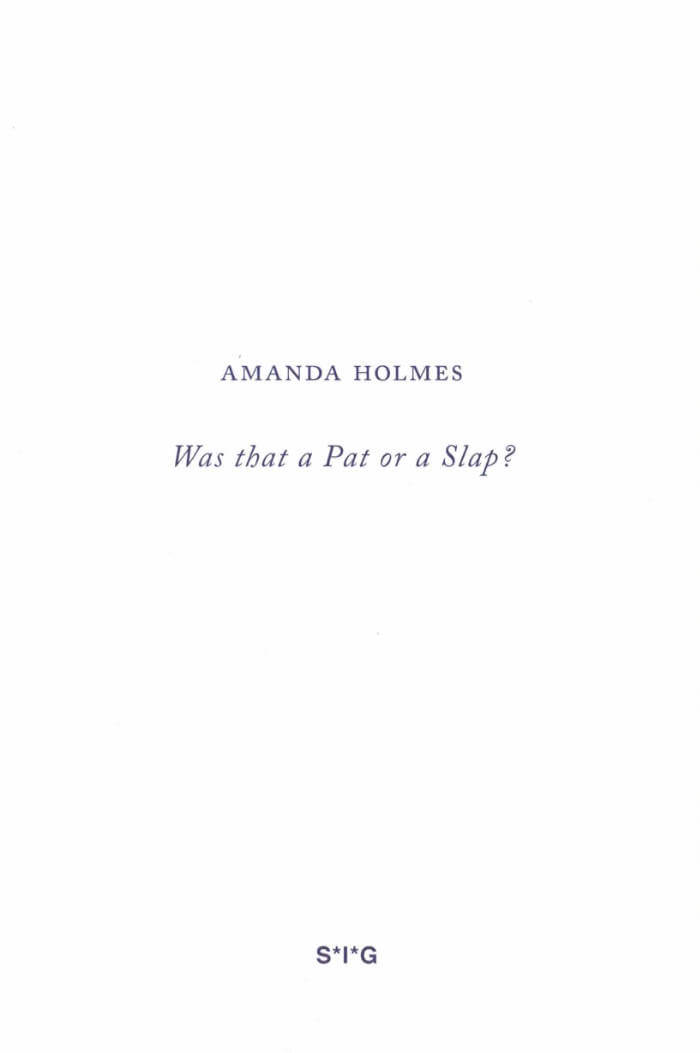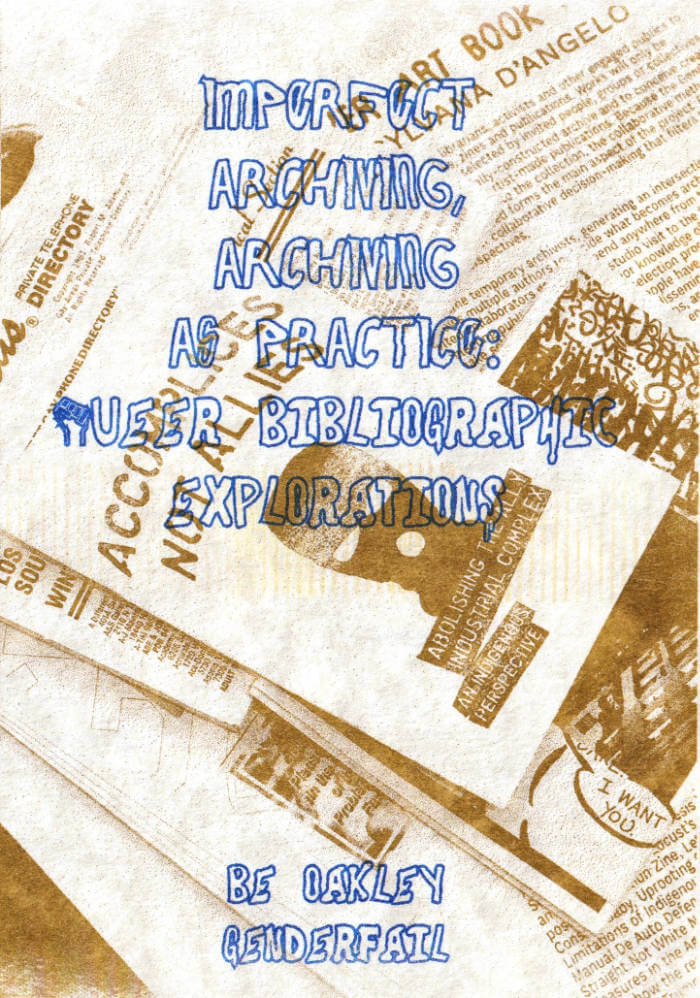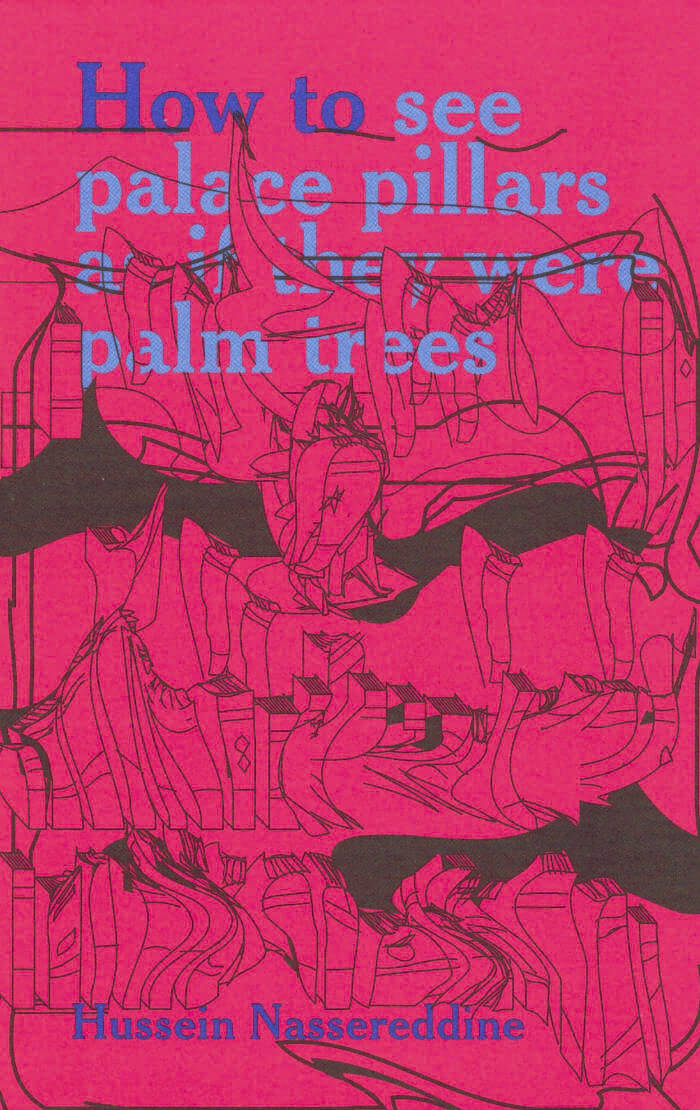
Was that a Pat or a Slap?
Lacan's Critique of Understanding and the Problem of Meaning.

Lacan's Critique of Understanding and the Problem of Meaning.

An essay in the form of painting studies - including persons, dogs, a frog, a hoofed animal, fish, hare, trees and plants.

In a single seventeen-page paragraph, Jill Johnston describes an odyssey in and out of a not-yet-described identity in this excerpt from her 1973 bestseller, "Lesbian Nation".


"From Work to Frame" was first published in English and Swedish in 1987 in a catalog of the Moderna Museet in Stockholm for the exhibition "Implosion: A Postmodern Perspective" (October 24, 1987 to January 10, 1988).
As S*I*G #12, the text is published in English and in its first German translation, alongside a preface by Hannes Loichinger, who is editor of this issue.

Imperfect Archiving, Archiving as Practice: Queer Bibliographic Explorations is a special expanded 5th edition centering on archiving as artistic practice. This manifesto talks to the core of GenderFail collecting and archiving practices that look to the softness as a metaphor for the material and content of artist-made publications. The GenderFail Archive Project is a socially engaged reading room that looks at archiving as practice. The project stems from GenderFail’s desire to share the publications from their personal library archive and give a platform to other publishers that they cherish. This publication features and highlights over a hundred artist books, art books, and zines.
This edition features a new section previously unpublished, showing bibliographies created for exhibitions and programs with the GenderFail Archive project at spaces such as Wendy's Subway, The Studio Museum of Harlem, and Cleveland Institute of Art's Reinberger Gallery.
This publication also features the 4th edition featured section showing seven curated GenderFail Archive Project reading lists from “Publishing Now,” a class I taught from 2021-2023 at the School of the Museum of Fine Arts at Tufts University. For this course, I wanted the students to read zines and publications being produced in real-time, so I started to digitize my collection as I acquired specific titles that I felt the students would resonate with. Many of the readings for this course were scanned from my collection of over 2,000 zines, artist books, and art books that make up the GenderFail archive. Since we could not meet in person (due to the pandemic), I spent hours scanning zines and artist books to be used as required readings for the course. Each reading list will accompany a link and QR code to read and engage with the complete scanned copies of all 31 featured artist books, art books, and zines.
The Imperfect Archiving, Archiving as Practice: Queer Bibliographic Explorations, is among my most cherished project I’ve published of the over 125 editions I’ve designed and printed with GenderFail.

For so it happens that when the poets speak, objects appear closer to their own shadows. The poet's mouth fills up with horses and marble, and his verses start to shine like rivers. These rivers then turn back to flow through the very palace he is depicting. The poet's own words begin to weigh down on him, as though he were holding up a palace with his palms. Then he travels, and the palace is obliterated. Countries and nations change, and naught remains but what the poets had seen. Of what the poets had seen, naught remains but its image in anthologies. And when the libraries have been flooded or burned to the ground, nothing but the commentaries on those anthologies are left, and all that one finds in these commentaries is that which was appropriated and wrought a thousand times over.
Hussein Nassereddine is a multidisciplinary artist. His work in installation, writing, video and performance originates from a practice around language that builds fragile monuments - some verbal, some sonic, some tactile - rooted in collective histories and resources of poetry, ruins, construction and image-making.
Translated from Arabic by Ben Koerber.

Edouard Glissant, Patrick Chamoiseau
The collected manifestos of Édouard Glissant and Patrick Chamoiseau: for a postcolonial response to planetary crisis.
Manifestos brings together for the first time in English the manifestos written by Édouard Glissant and Patrick Chamoiseau between 2000 and 2009. Composed in part in the aftermath of Barack Obama's election in 2008, the texts resonate with the current context of divided identities and criticisms of multiculturalism. The individual texts grapple with concrete historical and political moments in France, the Caribbean, and North America. Across the manifestos, as well as two collectively signed op-eds, the authors engage with socio-political aspects of climate catastrophe, resource extraction, toxicity, and neocolonialism.
Throughout the collection, Glissant and Chamoiseau engage with key themes articulated through their poetic vocabulary, including Relation, globalization, globality (mondialité), anti-universalism, métissage, the tout-monde (“whole-world”) and the tout-vivant (“all-living,” including the relationship of humans to each other and “nature”), créolité and the creolization of the world, and the liberation from community assignations in response to individualism and neoliberal societies.
Translated as the first volume in the Planetarities series with Goldsmiths Press, the themes of Manifestos resonate with the planetary as they work in response to contemporary forms of (economic) globalization, western capitalism, identity politics, and urban, digital and cosmic ecosystems, as well as the role of the poet-writer. A distinguishing feature of this publication is its interventional aspect, which prioritizes engaged scholarship and practice while demonstrating the relevance of the poetic in response to the urgencies of planetary crisis.
Translated by Betsy Wing and Matt Reeck
Afterword by Edwy Plenel